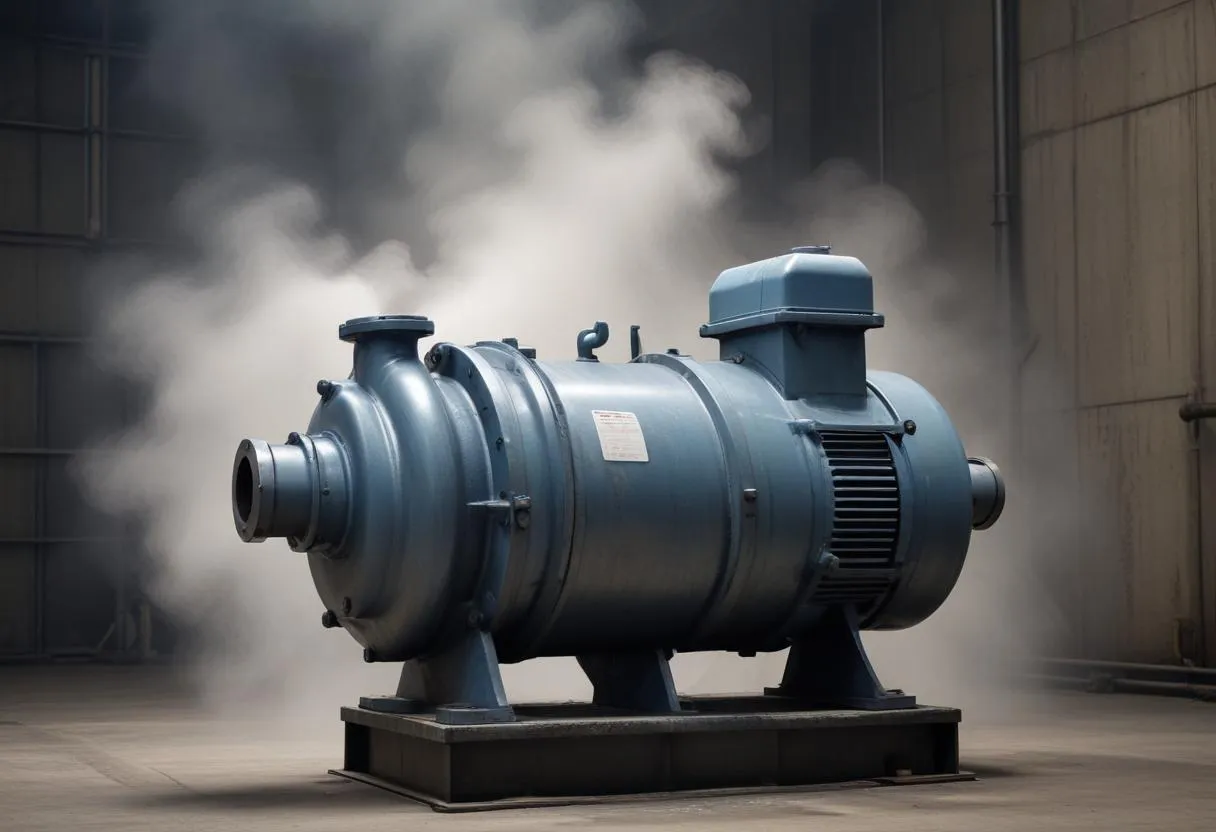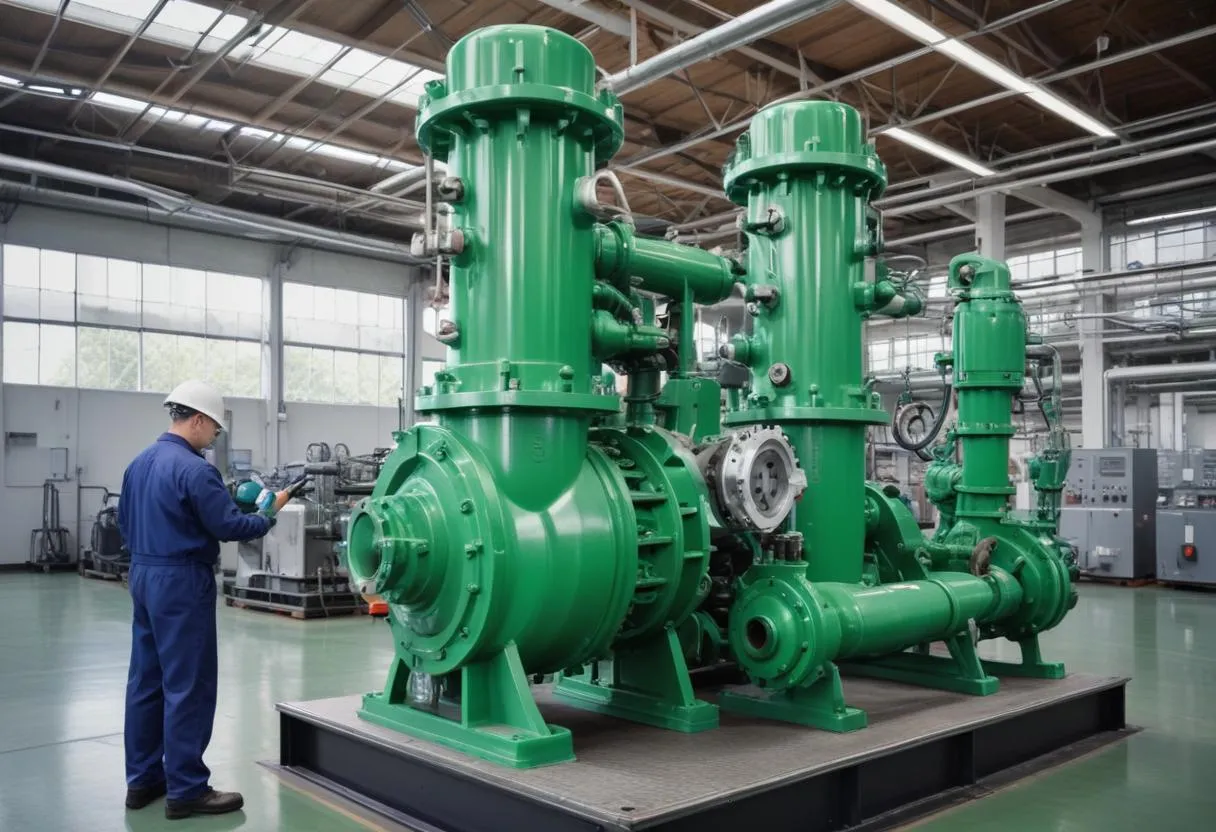 In the realm of industrial maintenance, the failure to detect common pump issues can lead to significant inefficiencies and costly downtime. Understanding these issues is essential to prevent larger mechanical failures and maintain operational continuity.
In the realm of industrial maintenance, the failure to detect common pump issues can lead to significant inefficiencies and costly downtime. Understanding these issues is essential to prevent larger mechanical failures and maintain operational continuity.
Vibration typically tops the list of prevalent pump problems. It can be caused by misalignment, imbalance, or looseness. Persistent vibrations not only signal the potential for future breakdowns but also significantly reduce the lifespan of a pump. Monitoring vibration levels regularly can help identify issues before they escalate.
Unusual noises are another indicator of pump problems. These noises can stem from a variety of issues such as bearing failures, cavitation (which occurs when liquid is vaporized within the pump), or hydraulic problems. Identifying the specific type of noise can help pinpoint the underlying issue.
Seal leaks are a common issue, particularly in older pumps. Leaks can lead to a decrease in pressure and efficiency, and in severe cases, may cause environmental hazards, especially if the fluid being pumped is hazardous. Routine checks are crucial for early detection and rectification of seal integrity.
Overheating often occurs due to excessive operation or inadequate cooling and can cause significant damage to pump components. This issue may arise from poor system design, failure of cooling components, or environmental factors surrounding the pump setup.
Low flow rates can indicate a blockage or inefficiency in the pump or its filters. This not only affects the performance but also increases the wear and tear, leading to a shortened operational life.
High energy usage can suggest that the pump is operating inefficiently. This might be due to several factors including the age of the pump, deteriorated components, or improper pump sizing for the application.
For a clearer understanding, here is a brief summary table of these issues:
| Issue | Possible Causes | Signs |
|---|---|---|
| Vibration | Misalignment, imbalance, looseness | Excessive shaking or movement |
| Unusual Noises | Bearing failure, cavitation, hydraulic problems | Grinding, squealing, or popping sounds |
| Seal Leaks | Wear and tear, poor installation | Dripping fluids, loss of pressure |
| Overheating | Poor design, environmental factors, failure of cooling components | High temperatures, smoke |
| Low Flow Rates | Blockages, deteriorated components | Reduced output, longer operation times |
| High Energy Usage | Inefficient operation, improper sizing | Increased power consumption |
Additionally, routine maintenance checks can help in early detection and resolution of these common issues. Regular monitoring of the performance metrics can significantly aid in maintaining pump efficiency and longevity.
Steps for conducting a pump inspection
When embarking on a pump inspection, adhering to a structured process is crucial to effectively identify and address any potential issues. Here are the primary steps to conduct a thorough pump inspection:
1. Preparation and Safety
Before beginning the inspection, ensure that all safety protocols are observed. Disconnect power sources, and where necessary, lock out the equipment to prevent accidental startups. Gather all the necessary tools and safety gear, such as gloves, goggles, and ear protection.
2. External Inspection
Start with a visual and physical check of the external parts of the pump:
- Examine the pump casing for signs of cracks or corrosion.
- Check the mounting points and baseplate for stability and integrity.
- Inspect drive components like belts and couplings for wear and proper tension.
3. Internal Inspection
Open the pump to inspect internal components:
- Look for any signs of wear or damage in the impeller, bearings, and seal areas.
- Check the integrity of gaskets and seals to ensure they are providing adequate sealing.
- Examine the internal lining of the pump case for erosion or buildup that can affect performance.
4. Operational Checks
After ensuring all parts are in good condition and securely assembled, proceed with operational checks:
- Reconnect power and start the pump briefly to observe any abnormal noises or vibrations.
- Monitor the pump pressure and flow rates to confirm they meet operational specifications.
- Check for heat issues during operation which could indicate insufficient lubrication or misalignment.
5. Performance Metrics
Record performance metrics to compare with baseline values:
- Document flow rate, pressure, power consumption, and temperature readings.
- Use these metrics to identify changes that might indicate underlying problems or inefficiencies.
6. Maintenance and Adjustments
Based on the findings, perform necessary maintenance:
- Replace worn or damaged components like seals, bearings, or impellers.
- Adjust misaligned parts or tighten loose components to ensure optimal operation.
- Lubricate moving parts as recommended by the manufacturer.
7. Documentation and Report
Summarize all inspection activities, findings, and any corrective actions taken in a detailed report. Documentation is essential for tracking pump history and planning future maintenance activities.
By following these detailed steps, technicians can ensure that pumps operate efficiently and reliably, minimizing the risk of unexpected failures and extending the service life of the equipment. Regular inspections as part of preventive maintenance protocols are indispensable in achieving these objectives.
Benefits of maintaining pump efficiency
 Maintaining pump efficiency through regular inspections and proper care offers a myriad of benefits that extend beyond the simple prevention of mechanical failures. Enhanced pump efficiency correlates directly with increased cost savings and environmental benefits, making it a critical focus for any business reliant on pump systems.
Maintaining pump efficiency through regular inspections and proper care offers a myriad of benefits that extend beyond the simple prevention of mechanical failures. Enhanced pump efficiency correlates directly with increased cost savings and environmental benefits, making it a critical focus for any business reliant on pump systems.
Cost Savings: Pumps that operate efficiently require less energy, leading to significant cost reductions in energy expenses. An efficient pump translates to less power required to move the same amount of fluid compared to an inefficient one. This reduction in energy usage is not only good for the budget but also for the company’s energy footprint.
Extended Equipment Lifespan: Regular maintenance and keeping pumps running efficiently prevent the undue stress and strain that might otherwise lead to premature wear and tear. Components such as seals, bearings, and impellers can last longer when they operate under optimal conditions, which includes maintaining proper alignment and lubrication, thereby extending the useful life of the entire pumping system.
Increased Operational Reliability: Efficiency is synonymous with reliability. When pumps operate efficiently, they are less likely to suffer unexpected breakdowns that can disrupt operations. This reliability is crucial for industries where downtime can result in significant operational losses, such as in manufacturing or water treatment facilities.
Improved Safety: Well-maintained and efficiently operating pumps are less prone to hazardous conditions like leaks, overheating, or failures that can pose safety risks to both personnel and the environment. Ensuring that pumps are functioning within their designed parameters helps minimize these risks.
Environmental Protection: Reduced energy consumption leads directly to lower carbon emissions. Additionally, efficient pumps are less likely to leak potentially harmful substances into the environment, thereby supporting compliance with environmental regulations and sustainability goals.
Compliance with Regulations: Many industries face strict regulations regarding energy consumption and environmental impact. Maintaining pumping systems in an efficient state ensures compliance with these regulations, helping avoid legal penalties and contributing to an organization’s image as a responsible community and environmental steward.
Here is a summary of these benefits:
| Benefit | Description |
|---|---|
| Cost Savings | Reduced energy requirements lead to lower operating costs. |
| Extended Equipment Lifespan | Optimal operation reduces wear and tear, extending component life. |
| Increased Operational Reliability | Efficient operations prevent downtime and operational disruptions. |
| Improved Safety | Fewer mechanical and operational issues decrease safety risks. |
| Environmental Protection | Less energy use and fewer leaks aid in meeting environmental standards. |
| Compliance with Regulations | Efficiency helps adhere to industry-specific environmental and safety regulations. |
By recognizing these benefits, businesses can allocate appropriate resources toward regular pump maintenance, thus ensuring they capitalize on the operational and fiscal advantages of maintaining high pump efficiency. With disciplined inspections and adjustment strategies, the return on investment can be significant, providing both monetary returns and contributions toward corporate responsibility goals.